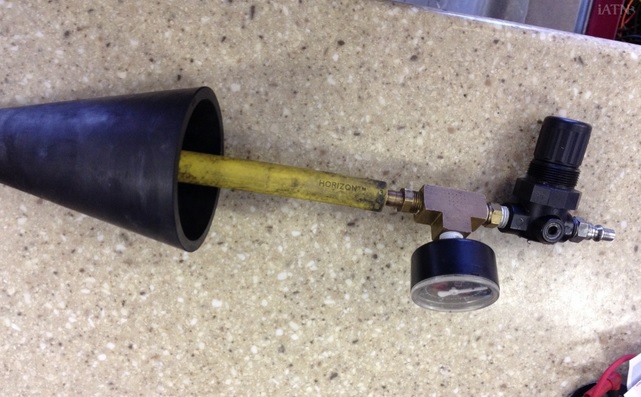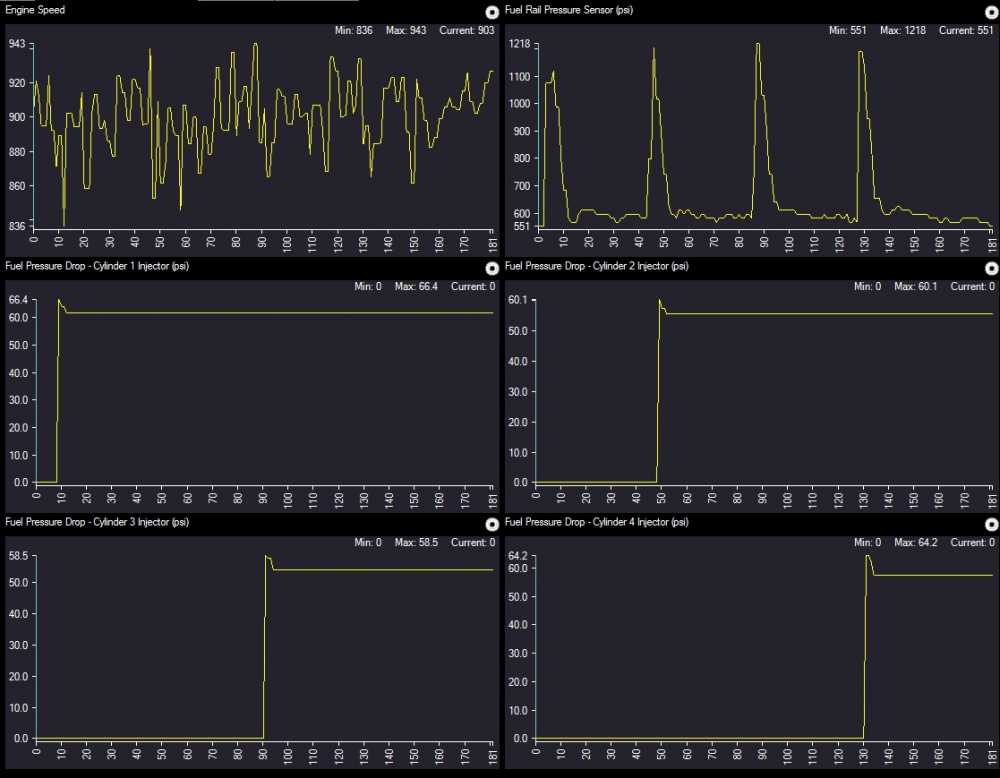*** Restricting New Posts to SD Premium Members ONLY *** (09 May 2025)
Just made a new account? Can't post? Click above.
2010 Traverse 3.6L showing a P2099
- ghost
-
Topic Author
- Offline
- New Member
-

- Posts: 3
- Thank you received: 0
I'm pretty good with the mechanical things but electrical and sensors seem to drive me nuts. I've read that it could be the mass air flow sensor, fuel pressure regulator, vacuum leak somewhere, o2 sensors.
Any help is greatly appreciated,
Ghost
Please Log in or Create an account to join the conversation.
- Doc n2mx
-

- Offline
- Senior Member
-

- Posts: 44
- Thank you received: 10
You mechanic is 100% correct about leaks in the exhaust leaks up stream of the cats. If there are any leaks you can get codes and issues. As for your problem P2099 I have listed what I would check.
Faulty Heated Oxygen Sensor Heated Oxygen Sensor harness is open or shorted Heated Oxygen Sensor circuit poor electrical connection Exhaust leaks Contaminated Heated Oxygen Sensor.
You will need a way to read the pids and you can make a tester (headlight) look at south main auto on you tube he shows how the test just what you need to know.
I will bet you need to change the O2 sensor…….
Good luck
Doc n2mx
Please Log in or Create an account to join the conversation.
- Tyler
-

- Offline
- Moderator
-

- Full time HACK since 2012
- Posts: 6039
- Thank you received: 1518
As for finding it, there's a few different ways. Smoke machine is one. Using a mechanics stethoscope around the flanges and O2 ports is another. Personally, I use an exhaust cone adapter with an air pressure regulator. That way, I can look for leaks with the engine off, and spray the exhaust with soapy water to find leaks.
If that comes up negative, then it kinda gets tough. Being fair to your mechanic and the dealer, but this can be a very tough code to reproduce reliably. Service info is kinda vague about the exact code set criteria, too.
I have heard from a few different sources (ScanShare.io, iATN, others) that fuel injectors are a common cause of this code. :blink: It doesn't have so much to do with their flow rate, as it does with the injector tips becoming clogged and degrading their spray pattern. The fuel trims don't notice it, but the downstream fuel control is sensitive enough to pick up on the imbalance.
I know, it sounds crazy! :lol: But that's what I'm hearing out of dealer techs. If you have access to a scanner with OE functionality, you can try the built-in injector balance test as a starting point. Here's an example off a known good 2.4L, as an example. Note, the ScannerDanner rule-of-thumb about 1.5 PSI variance between injectors does not apply here.
Please Log in or Create an account to join the conversation.
- ghost
-
Topic Author
- Offline
- New Member
-

- Posts: 3
- Thank you received: 0
From what I understand the Bank 2 is from the front manifold (the even cylinders). For this code, can a leak at the manifold gasket cause this? I plan on checking the whole thing.
Thank you both again. I'll post how it goes.
Ghost
Please Log in or Create an account to join the conversation.
- Ephratah
-

- Offline
- Senior Member
-

Hitting it with a Hammer is worth $5 knowing where to hit is worth $40
Please Log in or Create an account to join the conversation.
- Tyler
-

- Offline
- Moderator
-

- Full time HACK since 2012
- Posts: 6039
- Thank you received: 1518
Ephratah wrote: Tyler what kind of pressure do you use on the Exhaust tester that you made?
I usually dial in about 5 PSI, maybe 10 depending on how many leaks are in the system. I find that, if you keep dialing in pressure above that, you end up making stuff leak that wouldn't under normal operation.
I've been TOLD that you can damage stuff if you go too far, but I've never seen it. I consider it a pretty safe test overall.
Please Log in or Create an account to join the conversation.
- ecwurban
-

- Offline
- Premium Member
-

- Posts: 125
- Thank you received: 25
Tyler wrote: Being fair to your mechanic and the dealer, but this can be a very tough code to reproduce reliably.
I'm going to agree on this. O2 performance codes can be less than fun sometimes. It's often that they'll only set under certain conditions. This is the sorta thing you really need the right equipment for. Otherwise it could cost you a lot of time and running around in circles.
If I had this vehicle I'd want to look at engine data and get a baseline of fuel trims and O2 data under different load conditions. Especially comparing the two banks. P2099 is for bank 2. Now that doesn't mean you can't have a system wide issue like a faulty mass air flow sensor only throwing a code for one bank. Could be that it just passed the monitor for bank 1 and only bank 2 went past the threshold for flagging a code. Way too many variables. That's why you gotta get an idea of how it's running.
This is the sorta thing where freeze frame data is crucial. Pay particular attention if the engine was hot, engine load, what engine/vehicle speed, what the fuel trims were at the time and mass airflow. With something like this I always like recording the freeze frame then clearing the code and see if you can make it come back. That way you have an extra set of freeze frame data so you can feel confident under what conditions this vehicle is flagging that code.
I work with an Old-Timer that always rants and swears at Chevy's. In the beginning I would just brush him off. But then I started to notice that when I wanted to hit my head against the wall it was usually because of a Chevy... If you Google "Chev Traverse P2099" you'll come up with a lot of hits that say "post cat too rich bank 2". However the code definition is:
It says, "Rich correction limit for a condition causing a lean/air fuel ratio". Seriously, what kinda !@#$ says that?? I totally read that the first time as system too rich. I had a bunch of stuff written out. I was going to disagree on the exhaust leaks/clogged fuel injectors as they generally don't cause rich conditions. Then I read the code definition again. This actually IS a LEAN code! They're talking about a "Rich correction limit" as in fuel trims are as positive as they can go... Which means LEAN! That's the most backwards and ugly code definition I've read in a while!! :blink:
If bank 1 was also showing on the lean side then I'd suspect dirty mass air flow or a leak after the mass air flow and before the throttle plate. A system under reporting air but not a vacuum leak. Generally a vacuum leak will trigger a "System Too Lean" code and not a post cat code. If it's getting up in the miles and idles a little rough and feels a little sluggish then gummed injectors could definitely be a possibility. It doesn't even have to be a flow problem. Might even just be a matter of a bad spray pattern and not being able to atomize the fuel and evenly distribute it well.
If it's only affecting bank 2 then I'd suspect exhaust leak. It's unlikely that the downstream O2 sensor would be faulty without setting a different code but it is possible for the UPSTREAM sensor to be faulty and send improper data that the downstream can't correlate and triggers a downstream code. That's still lower on the likelihood scale though. The other possibility is bad cat. A healthy cat that is doing its job will be using oxygen. The downstream O2 reading should be steady and usually stays in the rich range. It's possible that the catalyst is breaking down and hasn't broken down enough to trigger a "Cat inefficiency code" yet triggers this one.
Again, many possibilities. The only thing to do for a case like this is get a feel for how it's running and when it's setting the code. You'd have to start narrowing things down.
Let us know what you find.
Please Log in or Create an account to join the conversation.
- ghost
-
Topic Author
- Offline
- New Member
-

- Posts: 3
- Thank you received: 0
I've learned a few things this weekend. I read a lot about o2 sensors, Probably too much. It seems that they are pretty much considered a wear item now and should be changed somewhat regularly. They can act up while showing good (passages get clogged, etc). So I'm probably going to change them since I am the 2nd owner and don't know the maintenance history.
Something else I learned is that trying to use your phone as a display screen for obd2 data is pretty rough. I have been using the Torque app as my data tool. I've started looking at PC software. I've run across one called OBD Auto Doctor. Has anyone used it? I downloaded it and tried it out but it's severely limited with out purchasing it (couldn't log anything related to this PID). It does have a 15 day refund.
How much data would I have to collect to see a good representation of the system? Obviously, I know 5 mins wouldn't cut it but I know mechanics aren't going to collect hours of data. I don't think it would be cost effective for them. Since I'm not one, I can. My plan is to start data logging while the engine cold and then drive to the near by town, hit some start/stop traffic, some stop lights and then drive home. It will be roughly a 2 hr round trip.
I tried cleaning the MAF sensor but no change. I'd like to check the pinout on it but I need to buy some back pin probes. Where does one go to find the pinout on sensor and the factory data perimeters for sensors (voltage, Htz, etc)? Does ALLDATAdiy or Mitchel's have that?
Thanks again for everything so far,
Ghost
Please Log in or Create an account to join the conversation.
- ecwurban
-

- Offline
- Premium Member
-

- Posts: 125
- Thank you received: 25
Most cheaper scanners ($200 and less) are just basic OBD2 code readers. They'll give you global OBD2 access. So generic engine codes and data. If you're wanting to mainly work on cars out of necessity then get one of these. Whether it be a handheld tool or something computer based. Just get one that has decent graphing capabilities.
If you really enjoy this sorta thing and want to get better at it then I'd recommend getting the Autel MD802Elite. It's about $250 or so. It's probably the best handheld scanner out there. It's not the best for viewing a lot of live data but then none of the non professional ones really are. It's key selling feature is that you're not limited to generic OBD2. You can go into vehicle specific mode where you get access to manufacturer specific codes and data. Plus you have access to all the other modules where you can read/clear codes and view livedata. Plus it's also updatable so you can use it on new vehicles.
In my experience I haven't found general data logging to be terribly useful. The problem with starting out at diagnosing is that it's really easy to get carried away spending hours and hours and not feel any further ahead. Likewise with the MAF. If you wanted to backprobe it for the sake of learning then that's cool but it's extremely unlikely that you'll find anything. You'll want to avoid backprobing anything unless you have a reason to. You want to try and avoid guessing something specific, trying to test it, then move on to something else specific, etc. Otherwise you'll just be running around in circles.
What you want to do is gather information about how your vehicle is doing. Under what conditions is it acting up and when is it good? Does the vehicle run rough or have a lack of power? If so is it all the time or only under load or just idle? How are the fuel trims under load and idle? How are the oxygen sensor readings under idle and load? At this stage you're not hardcore analyzing anything. You're just looking for anomalies and seeing which systems appear to be working fine. Then when you go through the list of possibilities you have a list of criteria you can match it against. Now when you get an idea, before you even test it, ask yourself if it'd have the same characteristics as what your vehicle has. Would it cause a vehicle to run fine when yours runs fine. Would it cause similar fuel trims that yours has. Could it cause that code without setting any other codes? If it seems less likely then move on to something else. Don't forget about it just move that idea lower down on your list of priorities.
It's not always straight forward. You just always have to ask yourself what you can do to narrow down your search or at least make your search more clear.
Please Log in or Create an account to join the conversation.
- Tyler
-

- Offline
- Moderator
-

- Full time HACK since 2012
- Posts: 6039
- Thank you received: 1518
ghost wrote: I've learned a few things this weekend. I read a lot about o2 sensors, Probably too much. It seems that they are pretty much considered a wear item now and should be changed somewhat regularly. They can act up while showing good (passages get clogged, etc). So I'm probably going to change them since I am the 2nd owner and don't know the maintenance history.
They totally do get slower with age, no doubt. But, I should let you know that the GM service info for this code specifically says NOT to replace the O2 for this fault. In other words, the O2 has to pass all the other monitors/tests before the PCM will consider setting this code.
Not saying you shouldn't replace them! Just passing the info on.
Please Log in or Create an account to join the conversation.
- ecwurban
-

- Offline
- Premium Member
-

- Posts: 125
- Thank you received: 25
If you do opt for changing your sensors just be forewarned that they like to seize up from rust. Your vehicle is still pretty new so might not be a problem unless your from the rust belt. At least one out of four vehicles that come by my shop needs the Oxy-Acetalyne to get out. You'll also want a proper oxygen sensor tool. But you can get those pretty cheap.
Please Log in or Create an account to join the conversation.



